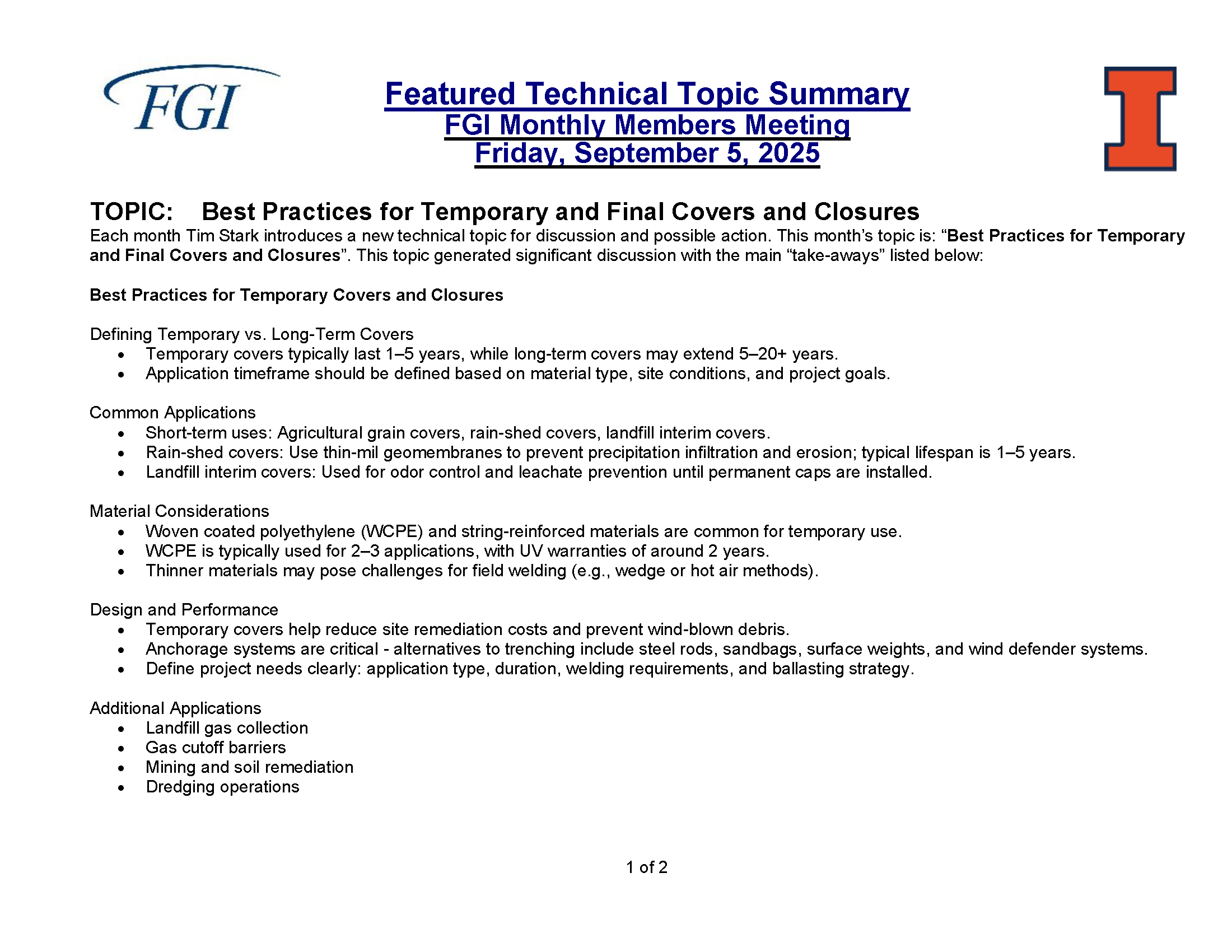
Defining Temporary vs. Long-Term Covers
• Temporary covers typically last 1–5 years, while long-term covers may extend 5–20+ years.
• Application timeframe should be defined based on material type, site conditions, and project goals.
Common Applications
• Short-term uses: Agricultural grain covers, rain-shed covers, landfill interim covers.
• Rain-shed covers: Use thin-mil geomembranes to prevent precipitation infiltration and erosion; typical lifespan is 1–5 years.
• Landfill interim covers: Used for odor control and leachate prevention until permanent caps are installed.
Material Considerations
• Woven coated polyethylene (WCPE) and string-reinforced materials are common for temporary use.
• WCPE is typically used for 2–3 applications, with UV warranties of around 2 years.
• Thinner materials may pose challenges for field welding (e.g., wedge or hot air methods).
Design and Performance
• Temporary covers help reduce site remediation costs and prevent wind-blown debris.
• Anchorage systems are critical - alternatives to trenching include steel rods, sandbags, surface weights, and wind defender systems.
• Define project needs clearly: application type, duration, welding requirements, and ballasting strategy.
Additional Applications
• Landfill gas collection
• Gas cutoff barriers
• Mining and soil remediation
• Dredging operations
Click Download for full document, including photos